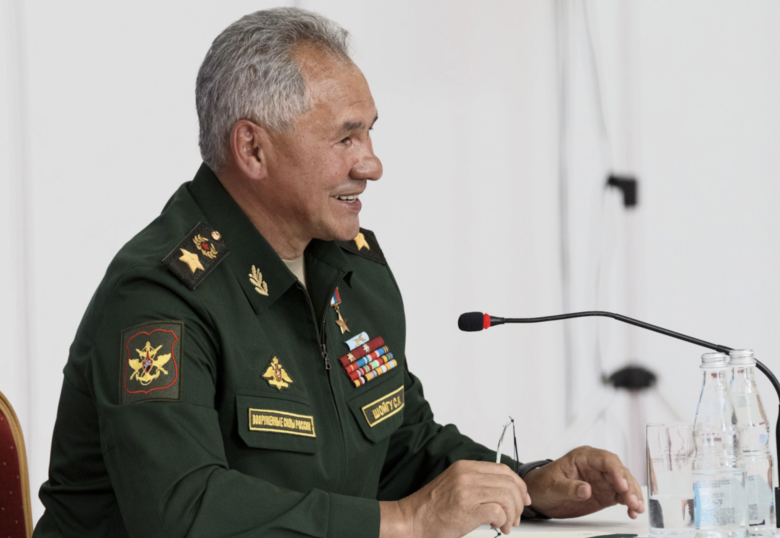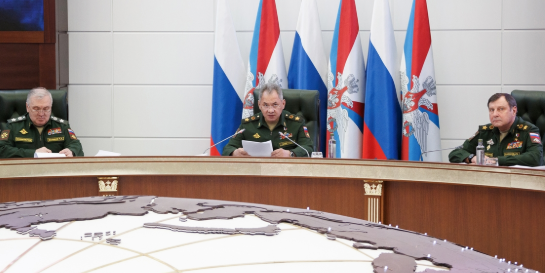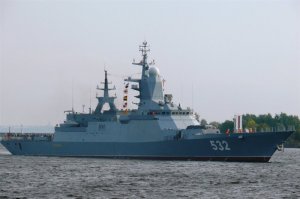In mid-July, Sergey Shoygu declared the Russian Army to be the world’s most modern. Over eight or nine years, he said, the armed forces have cardinally changed their composition.

Most observers won’t confuse “modern” with adjectives like “good” or “best” and descriptions like “most capable” or “most effective.”
Such assessments depend on a multitude of other factors including manpower, training, employment, etc. They require a hard look at whether recently-procured systems are the right ones. The ones needed for the next war.
Modern also implies and necessitates serious investment in maintenance, upkeep, and more updating and modification down the road. A continuing commitment to stay modern.
But, when all is said and done, modern is better than the alternative.
Aleksandr Golts looks at how Russia’s Defense Ministry has gotten (or is getting) modern, what it means, and what it costs in a recent piece for Republic.ru (paywalled).
Golts notes that Shoygu could have claimed 120 percent modern and no one could dispute him given that only the MOD possesses the data. A good bit of Russia’s “modern” equipment, he writes, consists of venerable but modernized weapons systems like the Su-24 and T-72.
He asks why Russia’s OPK isn’t thriving while pumping out all these modern arms. Put simply the answer is the Putin regime’s unwillingness to pay what they really cost (like gold Golts says) and giving defense industries just enough financing and bailouts for them to limp along. He updates Yuriy Borisov’s previous statements about more than 2 trillion rubles ($27 billion) in total OPK debt.
Lastly, Golts explains the failure to launch new weapons like the Su-57 into series production is due to the inability to get multitudinous subsystems, components, and materials needed for final assembly at KnAAPO. Paying what those parts actually cost inevitably raises the MOD’s final purchase price.
It’s worth remembering that truly independent Russian military journalists of Golts’ caliber — not afraid to write and speak about issues that should make the regime uncomfortable — are an increasingly endangered species.
Below is a moderately cleaned up Google Translate translation.
How much Shoygu’s boasting costs.
“Modern weapons,” which the bosses are so proud of, cost the country as much as if they were made of gold
Russian Defense Minister Sergey Shoygu bragged about stuff. Speaking in Rostov-na-Donu before employees of [Russia’s] largest helicopter plant Rosvertol, the military department’s head said something sensational: “Today everyone – some angrily, some approvingly – understands and says the Russian Army has more than 70%, or if we put it precisely, almost 71% modern armaments and equipment. This is the highest percentage among all world armies.” With two months left until the Duma elections, and Shoygu in the federal “five” of the ruling party and, it can’t be excluded, planning to continue his career in some higher position, such boasting looks excusable. Before elections, they certainly lie no less than in war and in hunting.
Competing with yourself
But the statement that our army is not only one of the most advanced armies in the world (this has already been stated more than once), but that it even surpasses them, requires at a minimum clarifications. First of all, we note that Russia surely wins a competition with itself. Such a criterion as the percentage of modern weapons exists in the official documents of only the Russian military department. For the armed forces of the United States, like the armies of most other states, it would look meaningless at least. There, overseas, military equipment lives a full and very long period of time. Once put into service, the tank and aircraft consistently — stage by stage, cycle by cycle — undergo scheduled repairs and modernization, remaining in service for decades. Here you can recall the F-15 aircraft (adopted in 1976, will remain in the inventory until 2025), the F-16 (transferred to the armed forces in 1978, will serve until 2025), the Abrams tank (in service from 1980, there are no plans to replace it) and the Patriot air defense system (entered service in 1982, serves at the present time). If it had occurred to anyone to calculate the percentage of “modern” weapons in the American armed forces, it would most likely be steady.
Russia, on the other hand, introduced this indicator [“modern”] due to very specific circumstances. During 15–20 years (from the beginning of the 1990s to the mid-late 2000s), the Russian military’s armament inventory was not only not updated or modernized. The equipment was not even repaired or maintained in proper condition. In 2008, during the war with Georgia (the war that became the moment of truth for the Kremlin), almost half of the tanks and infantry fighting vehicles urgently taken from storage bases simply broke down and did not reach the border. It was already impossible to bring most of this equipment into operation. As a result, the concept of “modern equipment” was invented, which today safely includes both recently developed Su-57 fighters and Armata tanks, as well as the modernized Su-24 and T-72, which have been in service for almost half a century.
It should also be noted that the existing system of secrecy and the monopolization of information by the military department excludes any possibility of verifying the victorious reports of General Shoygu. The only exception is strategic nuclear forces, data on the composition of which Moscow regularly provides, fulfilling its obligations under the START Treaty (there is a high rate of “modern weapons” — 83% — due to the fact that Russia spends, according to experts, over 20% of its entire military budget on nuclear weapons). As for the general-purpose forces, Sergey Shoygu can draw any indicator of the availability of modern weapons — at least 70, at least 120% — it is impossible to verify this.
OPK in debt
But if we take the minister’s words on faith, it turns out that the successes in the rearmament of the Russian army are much more significant than those of the U.S. armed forces (whose military budget is more than 10 times higher than the Russian one) and of the Chinese army (which spends at least four times more on military purposes than Russia). But if so the the military-industrial complex (OPK), which fulfills the state defense order so remarkably, should flourish. However, it’s never happened. In 2019, even before all the covid lockdowns and ensuing economic losses, Deputy Prime Minister for the defense sector Yuriy Borisov shocked the expert community, announcing that about 2 trillion rubles of debt was hanging over enterprises of the defense-industrial complex. Moreover, he confirmed “the main body of the credits will never be repaid.” In fact, he talked about the inability even to pay interest on loans. Defense enterprises spent about 200 billion rubles on interest payments, according to Borisov. “This figure beats with the planned profits of the defense industry enterprises, it turns out to be such a paradox. I cite an example from real life all the time: we boil water, drink and refill. That is, there is practically no opportunity to rely on internal sources, on the most effective sources, on our own funds,” Borisov complained. Previously, he compared the work of the military industry with exercising on a stationary bike: no matter how much you push on the pedals, you still won’t get anywhere.
According to media reports, more than 10% of defense industry enterprises (140 out of 1319) are approaching bankruptcy. The only thing that the state can offer is early repayment of loans at the expense of the budget. In 2016, 800 billion of budget rubles were spent on this, in 2017 – another 200 billion. At the same time, the debt burden did not decrease in a remarkable way, but grew. In 2020, Yuriy Borisov proposed to write off the debts of defense enterprises already by 600-700 billion rubles. And he managed to convince Putin of the need for this. According to Borisov, in 2020 “350 billion rubles of ‘toxic’ loans were written off through additional capitalization of enterprises. Another 260 billion rubles were restructured, and there is still a 150 billion ruble reserve.”
So the state twice (once through the allocation of funds for production, the second time through the write-off of loans) financed the manufacture of “modern weapons”, which Sergey Shoygu boasts. Do you think that after that there was finally financial prosperity? Not at all. At the end of last year, as reported by the Vedomosti newspaper, it was decided to again finance the implementation of the state defense order with bank loans, although initially it was proposed to do this through the federal treasury, that is, to transfer money directly from the state budget to the defense industry enterprises. Most likely, this is due to the fact that the state is resolutely unwilling to abandon ambitious rearmament programs, despite the fact that the necessary funds are no longer there. It is planned to attract 360 billion rubles of loans in three years to fulfill the state defense order. That is, there is a continuation of the vicious practice of the past decade, when enterprises disrupted production deadlines, and with them the deadlines for paying debts, and finally got entangled in the endless payment of interest.
Russian defense sector with Soviet problems
I’d venture that the source of the problem is the archaic system of the OPK. With the blessing of Vladimir Putin in the mid-2000s, Sergey Ivanov drove military-industrial enterprises into a dozen and a half vertically integrated industrial corporations, which were a caricature of the famous nine Soviet defense-industrial ministries. They quite successfully inherited all the vices of Soviet bureaucracy, endless approvals, corruption, and unwillingness to take responsibility. But, fortunately or unfortunately, they could no longer inherit the production system. Because of its absence. In the Soviet Union, only final assembly plants were considered defense. And numerous components (in the Su-27, for example, up to 1,500) were manufactured at civilian enterprises, each of which had a so-called mobilization task. It had nothing to do with the economy. The cost of producing military products [those components] was actually included in the cost of civilian goods, which was reflected in their quantity (remember the eternal Soviet deficit) and their quality. To create at least the appearance of profitability, the all-powerful Gosplan [State Planning Committee] artificially balanced the prices of civilian goods and weapons. It is no coincidence that now from OPK managers it’s possible to hear proposals for the revival of Gosplan.
In the meantime, even under the threat of criminal punishment, the state has failed to force owners of private enterprises to make components for the OPK at a loss. Indeed, for the production of a limited number of particular parts, it is necessary to maintain separate production lines (the military has completely different requirements for quality and precision) and extra workers. As a result, the military industry is doomed to produce components at final assembly plants. Only this can explain the simply snail-like pace of armaments production which has been declared serial.
So, serial deliveries of the fifth generation Su-57 fighter were supposed to begin in 2016. In reality, the first aircraft was manufactured by the end of 2019, but it crashed during a test flight. After that, exactly one year passed before the next “serial” fighter was transferred to the Aerospace Forces. The head of the United Aircraft Building Company, Yuriy Slyusar, promised Vladimir Putin to deliver as many as four aircraft this year. The same story with serial production of the newest tank “Armata.” It was planned to produce more than two thousand tanks by 2020. Then they started talking about only a hundred tanks. Now they promise to start serial production in 2022, but they don’t specify the size of the series. It’s no secret that serial production is characterized by a sharp reduction in the cost of production. After all, the product, roughly speaking, is assembled from a set of standard assemblies and parts. Nothing needs to be “adjusted” and “customized” any longer. However, this isn’t seen at all in the production of “Armata” (and they specify clearly reduced prices for the Su-57). The approximate cost of the tank has increased from 250 million rubles to 450 million rubles per unit.
On July 20, the international air show MAKS-2021 will open in Zhukovskiy near Moscow. Vladimir Putin promised to attend. Probably, on this day we will hear a lot of praise about the successes of our OPK, including, of course, the rearmament of the army. However, one must remember: all these “modern weapons”, of which the authorities are so proud, cost the country like they were made of gold.















